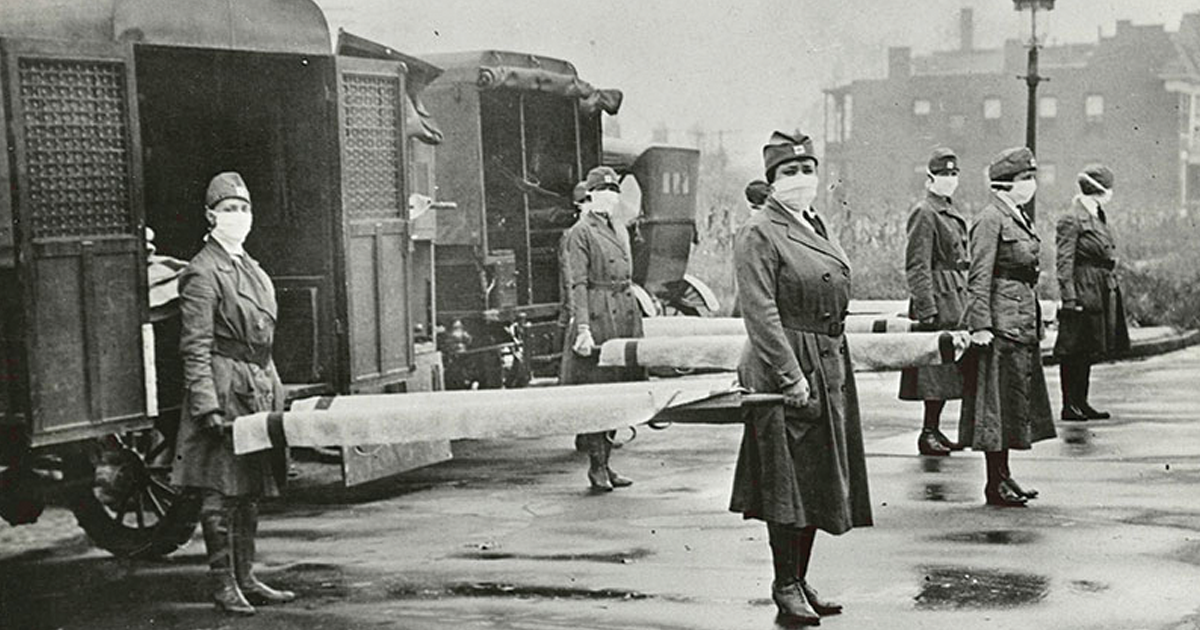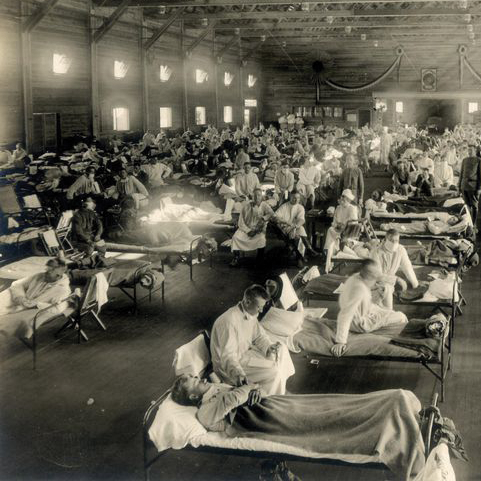The 1918-1920 Spanish Flu
Salvation Army personnel wrote letters home, served coffee and doughnuts, helped nurse sick men, cleaned hospitals and provided encouragement to the soldiers.
In 1918, The Salvation Army was at the height of its international popularity. Its war work during the Great War (WWI) was exemplary and recognized by governments across the globe. National Commander Evangeline Booth received the Distinguished Service medal from General John J. Pershing for all of the work that the Army did in France. The combat was soon to shift to an unseen enemy. The Great War had prepared the Army for a new challenge.
The Spanish flu was an unusually deadly influenza pandemic. Lasting from January 1918 to December 1920, it is considered one of the deadliest epidemics in human history.
In New York, Lillian Wald, a pioneer nurse, called for help and the Army answered. Wald mobilized a multitude of nurses, organizations, church groups, municipal bureaucracies, civic entities and social agencies into a Nurses’ Emergency Council. The group assembled volunteer nurses and enlisted women who could support them by answering phones, accompanying nurses and doctors on home visits, and arranging for and driving automobiles to carry linens, pneumonia jackets and quarts of soup.
Homeless shelters became makeshift hospitals and new cleanliness protocols were enforced. The Army had always believed that “cleanliness is next to Godliness,” but a new emphasis was placed on disinfecting the crowded city shelters.

The Army also began food distribution to the poorest of families in the major centers of operation, like New York City, Chicago and San Francisco. The “war work” continued as thousands of AEF soldiers began returning home from France. Many were crowded into temporary camps and the flu swept through the ranks. Salvation Army personnel wrote letters home, served coffee and doughnuts, helped nurse sick men, cleaned hospitals and provided encouragement to the soldiers. Naturally, the Salvationist offered to pray and read the Bible to those in the hospital.
Like most flu strains, the Spanish flu quickly mutated, and illness levels dropped dramatically in 1919 and 1920. The “roaring twenties” had begun and people soon forgot about the flu epidemic. It wasn’t until the 1990s when new flu strains began to affect the world population that interest in the Spanish flu was revived.
Through it all, The Salvation Army served and continues to serve suffering humanity throughout the world.
Photo: Salvation Army National Archives







